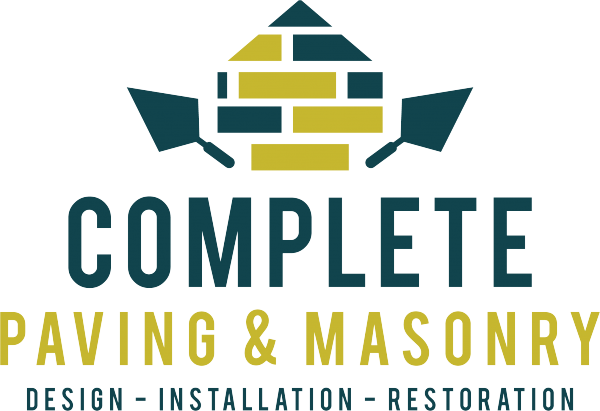Sealing the Chimney Flue
Sealing the chimney flue is a crucial step in ensuring the efficiency and safety of your chimney. During Chimney Installation Westwood, proper sealing of the flue helps prevent unwanted drafts, debris, and moisture from entering your home. It also plays a key role in maintaining optimal airflow and preventing heat loss, ultimately contributing to the overall efficiency of your chimney system.
Using high-quality sealing materials is imperative to prevent leaks and maintain the structural integrity of the chimney flue. Silicone-based sealants are commonly recommended for their durability and heat-resistant properties. When sealing the flue, it is essential to pay close attention to any gaps, cracks, or deterioration that could compromise the effectiveness of the seal. Regularly inspecting and maintaining the chimney flue seal will help prolong the lifespan of your chimney system and ensure it operates safely and efficiently.
Using the right materials to prevent leaks and maintain efficiency
Selecting the appropriate materials is crucial in ensuring that your chimney remains leak-free and operates at optimal efficiency. In the process of Chimney Installation Westwood, it is essential to use high-quality sealants and insulation to prevent any potential leaks. Waterproof flashing should be used around the base of the chimney where it meets the roof to create a tight seal and avoid water infiltration. Additionally, utilizing a well-fitted chimney cap can protect the flue from rain and debris, further safeguarding the chimney against water damage and blockages. Investing in these materials during the installation phase can significantly contribute to the longevity and functionality of your chimney system.
Furthermore, choosing the right lining materials for your chimney can enhance its efficiency and safety. Opting for a durable and heat-resistant lining such as stainless steel or ceramic can prevent heat transfer to combustible materials and improve the overall performance of your chimney. Proper insulation around the chimney liner can also aid in maintaining heat within the flue, optimizing the draft and reducing the risk of creosote buildup. By carefully selecting materials that prioritize both leak prevention and efficiency, homeowners can enjoy a well-functioning chimney system that provides reliable warmth and ventilation.
Inspecting and Maintaining the Chimney
Inspecting and maintaining the chimney is a critical aspect of ensuring its longevity and optimal performance. Regular inspections help in identifying any potential issues such as creosote buildup, cracks, or blockages that could compromise the safety and efficiency of the chimney. Chimney Installation Westwood experts recommend annual inspections to catch any problems early and address them promptly.
Routine maintenance tasks like cleaning out debris, checking for water leaks, and ensuring proper ventilation are essential for keeping the chimney in top condition. Additionally, scheduling professional cleanings can help prevent chimney fires and carbon monoxide leaks. By staying proactive with inspections and maintenance, homeowners can enjoy a safe and efficient chimney system that functions reliably for years to come.
Understanding the importance of regular inspections and cleanings
Regular inspections and cleanings play a crucial role in ensuring the safety and efficiency of your chimney system. Neglecting these essential maintenance tasks can lead to a host of issues, including chimney fires, carbon monoxide leaks, and decreased heating efficiency. By scheduling routine inspections and cleanings, homeowners can identify potential problems early on and address them before they escalate into costly repairs. Professionals, such as those at Chimney Installation Westwood, recommend annual inspections to catch any issues before they compromise the functionality of the chimney system.
During inspections, trained technicians thoroughly assess the condition of the chimney, looking for signs of damage, blockages, or structural issues. In addition to visual inspections, chimney sweeps remove creosote buildup, a byproduct of burning wood that can ignite and cause chimney fires if left unchecked. Regular cleanings not only enhance the safety of the chimney but also improve its overall performance. By investing in regular maintenance for your chimney, you can enjoy peace of mind knowing that your fireplace is operating efficiently and safely.
Troubleshooting Common Chimney Issues
H3: Identifying and addressing chimney drafts, leaks, and blockages
Chimneys are essential for proper ventilation and the safe release of gases from a fireplace or stove. However, they can develop issues over time that may affect their efficiency and safety. Common problems include chimney drafts, leaks, and blockages. Chimney drafts occur when there is poor airflow, causing smoke to enter the room instead of exiting through the chimney. To address this issue, it is crucial to inspect the chimney for any obstructions, such as debris or bird nests, that may be impeding proper airflow. Additionally, ensuring the damper is functioning correctly can help regulate airflow and prevent drafts.
Chimney leaks can lead to water damage, mold growth, and structural issues in your home. To prevent leaks, it is essential to use high-quality materials during Chimney Installation Westwood and regularly inspect the chimney for any signs of water infiltration. Common culprits of chimney leaks include damaged flashing, cracked masonry, and deteriorated chimney caps. Addressing these issues promptly can help maintain the integrity of your chimney and prevent costly repairs in the future.
Identifying and addressing chimney drafts, leaks, and blockages
Chimney drafts, leaks, and blockages can wreak havoc on the efficiency and safety of your chimney. Identifying these issues early on is crucial to prevent further damage and ensure the proper functioning of your fireplace. If you notice a draft coming from the chimney even when the fireplace is not in use, it could indicate a problem with the damper or seals. Leaks, on the other hand, can lead to water damage and compromise the structural integrity of the chimney. These issues should not be overlooked, as they can result in costly repairs if left unaddressed. For residents in Westwood, Chimney Installation Westwood provides expert services to detect and resolve chimney drafts, leaks, and blockages promptly.
To address chimney drafts, leaks, and blockages, a thorough inspection by professionals is necessary. Blockages caused by debris, bird nests, or even crumbling mortar can obstruct the flue and restrict airflow. Identifying and removing these obstacles is essential for the proper functioning of the chimney. In addition, sealing any cracks or gaps in the chimney structure can prevent drafts and leaks from occurring. Regular maintenance and prompt action are key to ensuring the longevity and efficiency of your chimney system. For those residing in Westwood, Chimney Installation Westwood offers comprehensive solutions to tackle chimney issues effectively and maintain a safe environment in your home.
FAQS
Why is it important to seal the chimney flue?
Sealing the chimney flue helps prevent drafts, leaks, and blockages from entering your home, ensuring optimal efficiency and safety.
What materials should I use to prevent leaks and maintain efficiency in my chimney?
It is recommended to use high-quality chimney caps, flashings, and sealants to prevent water leaks and ensure proper ventilation in your chimney.
How often should I inspect and maintain my chimney?
It is important to have your chimney inspected and cleaned at least once a year to prevent potential hazards and ensure efficient operation.
Why are regular inspections and cleanings important for chimneys?
Regular inspections and cleanings help identify and address any issues such as creosote buildup, blockages, or leaks, ensuring the safety and functionality of your chimney.
What are some common chimney issues that may need troubleshooting?
Common chimney issues include drafts, leaks, and blockages, which can impact the efficiency and safety of your chimney if not addressed promptly.
Related Links
Chimney Installation Westwood
Constructing the base of the chimney



